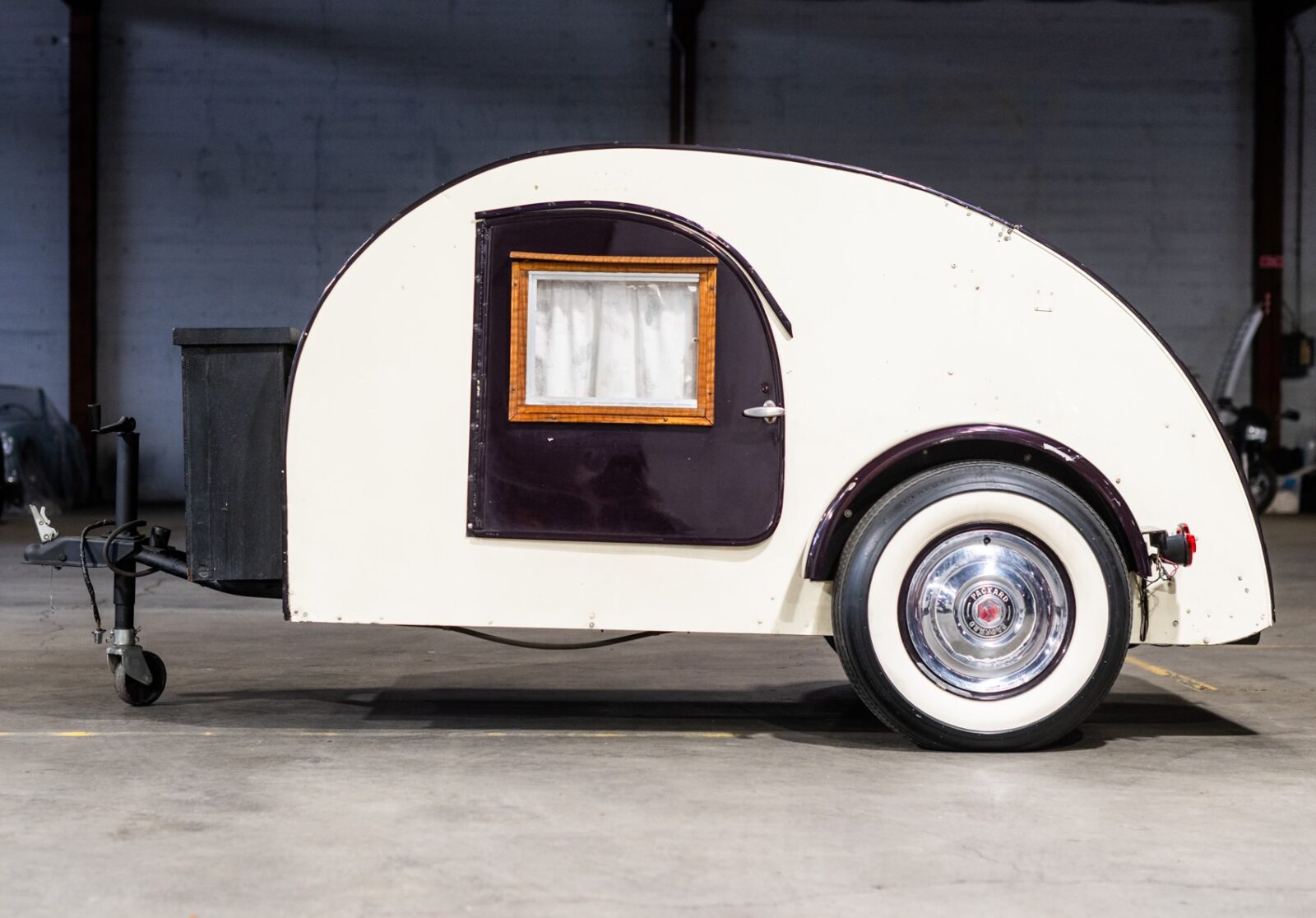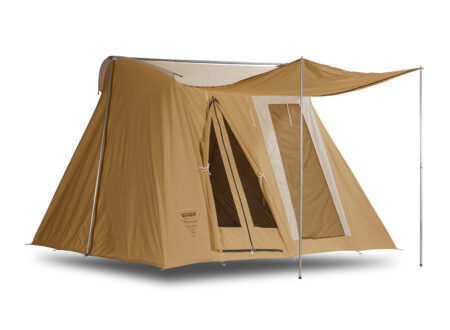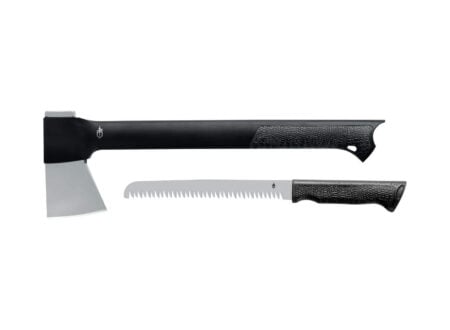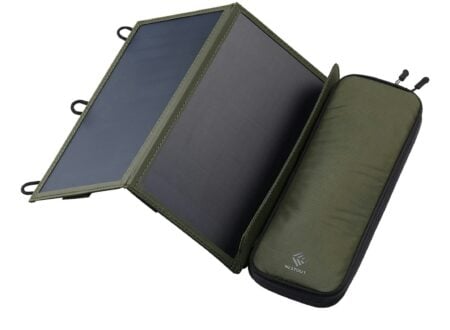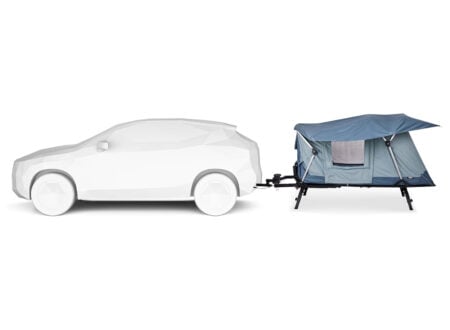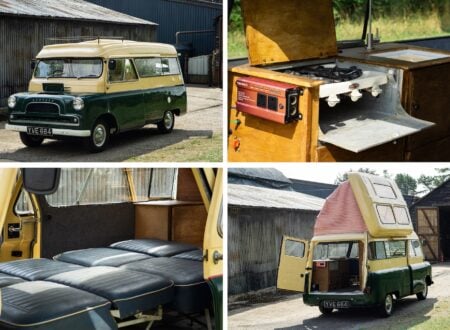This is an aluminum teardrop travel trailer built by TRLR in 2003. Teardrop trailers like this were developed in the 1920s and 1930s as ultra-lightweight trailers that even the lower-horsepower cars of the time could tow.
In recent years teardrop travel trailer exploded in popularity once again, offering the essentials you need (sans bathroom) while on the road with a far lower price when compared with a full-scale travel trailer. They also result in much lower fuel bills, as they are small with good aerodynamics and often weigh under 1,000 lbs.
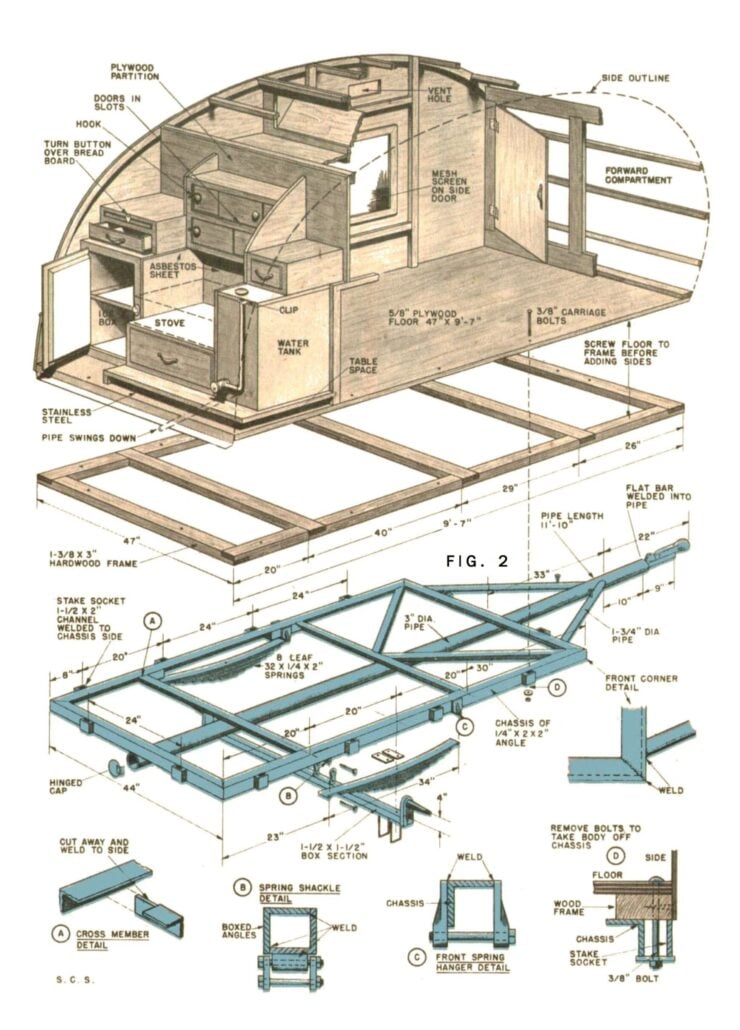

A History Speedrun: Teardrop Travel Trailers
The first teardrop travel trailer is lost to history, no one knows exactly who invented to concept, but they first began appearing in the late 1920s, with do-it-yourself plans beginning to appear in magazines like Popular Mechanics and Mechanix Illustrated in the 1930s.
The fundamental design of the teardrop travel trailer hasn’t changed a whole lot in the almost-a-century since they first debuted. They have a teardrop profile, hence the name, and inside you’ll typically find a double bed, some storage space, and even built-in lighting and electrical outlets on higher-end models.
The rear of the teardrop trailer often has a hatch that opens to show a kitchenette with cooktops, storage for plates, cups, bowls, and cutlery, as well as counter space for food preparation. The open hatch then doubles as a sun or rain shelter while cooking.
Teardrop trailers almost always have just a single axle due to their low weight, a weight that typically falls under 1,000 lbs or 450 kgs, and as a result almost any car can tow them. This was significant back in the 1930s, when most cars on the road had well under 100 bhp and simply couldn’t tow a trailer any larger.
In the 1930s, in the midst of the Great Depression, building materials for non-essentials like travel trailers were somewhat limited for those on a budget. As a result, almost all early teardrop trailers were built of wood, with a simple steel chassis and axle.


Higher-end trailers like those pioneered by Hawley Bowlus were made of aluminum, and the trailers built by Airstream soon followed suit – this was a sign of things to come in the industry.
In the years after WWII there was a popularity boom in the leisure market that affected cars, boats, trailers, and more. Teardrop travel trailers were favored by those on more limited budgets, and there were stories of many being built from aluminum sourced from the wings and fuselage sections of decommissioned war-time bombers.
After the time the popularity of the teardrop trailer began to subside, full-size trailers had become more affordable due to the economies of scale, and the cars of the time were far more powerful and able to tow them.
In the 1990s, thanks in part to the retro-style renaissance, teardrop trailers began to come back into vogue. People began discovering and publishing early plans from the 1930s, 1940s, and 1950s, and before long small companies began popping up to build them to customer specification.
Today there is a thriving teardrop trailer industry in the USA and around the world. Many now have built-in electrical systems, well-equipped kitchens, and some even have solar roofs for off grid camping. The fact that the trailers are cheaper to buy and don’t harm the fuel bill too much has resulted in an intergenerational allure that shows no signs of slowing.
The TRLR Aluminum Teardrop Travel Trailer Shown Here
The travel trailer you see here was built by the company TRLR back in 2003. This company seems to no longer be in business and information about them is scarce, but it’s clear that it was built to a high level and it’s constructed of riveted aluminum over wood with a steel chassis.
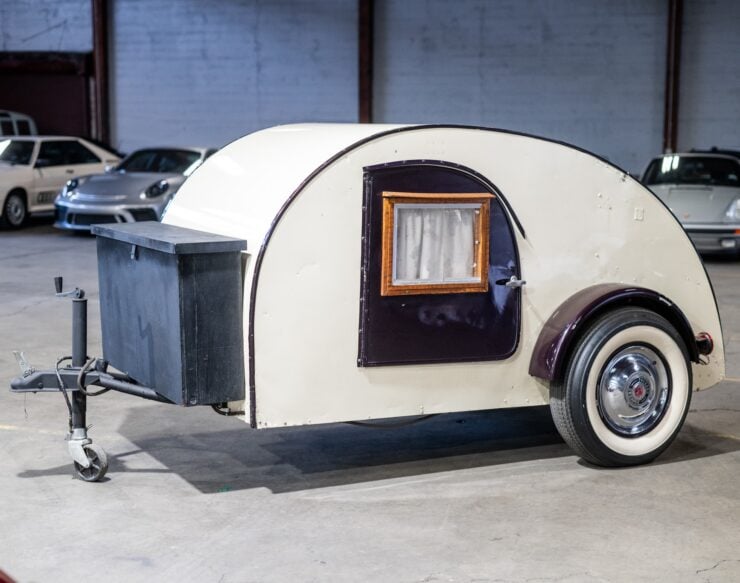

This trailer has a double bed inside, it has a front cargo box, dual entry doors with windows (one on either side), a rolling tongue jack, two storage shelves inside, and a memory foam mattress. Under the rear hatch you’ll find a kitchenette with a two gas burners, a built-in cooler, and storage space for cutlery and crockery.
It’s now being offered for sale out of Portland, Oregon on Bring a Trailer with a clean Washington title listing the vehicle as a 2003 TRLR. If you’d like to read more about it or register to bid you can visit the listing here.
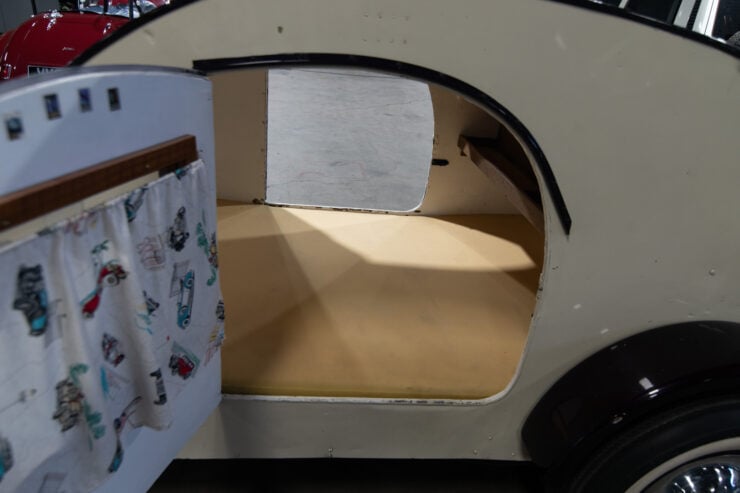
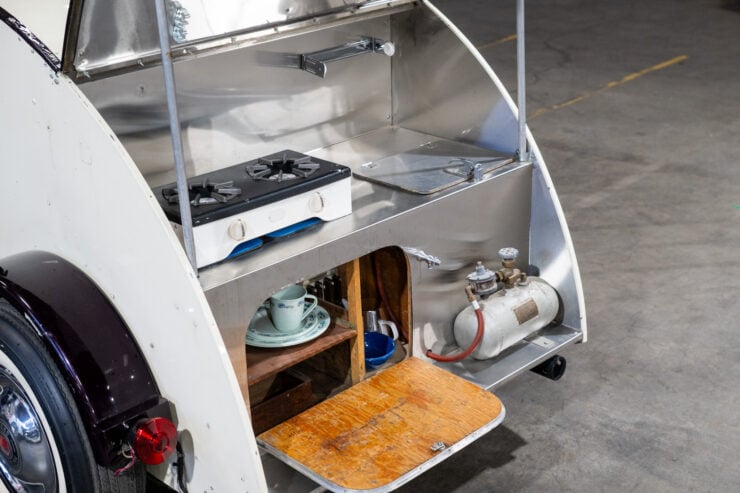
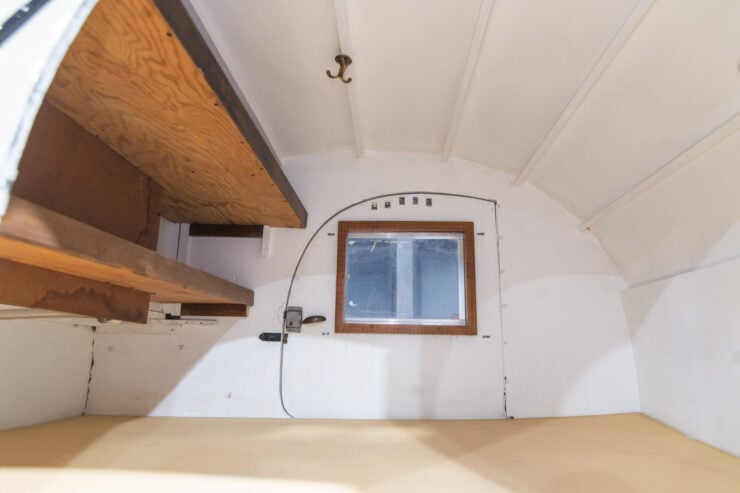

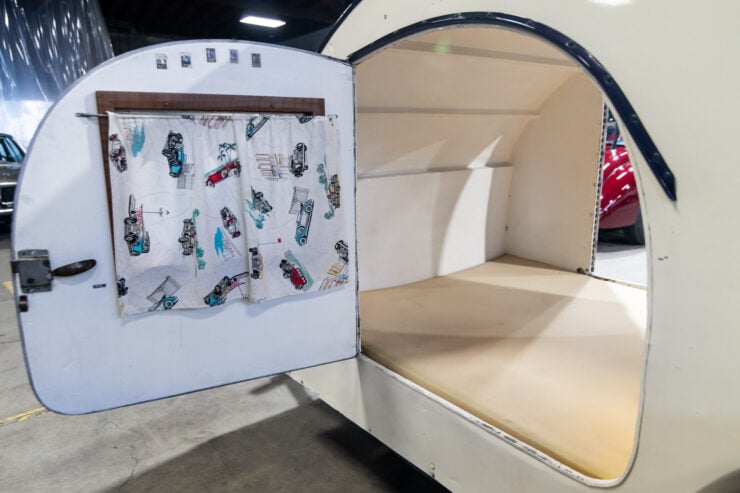
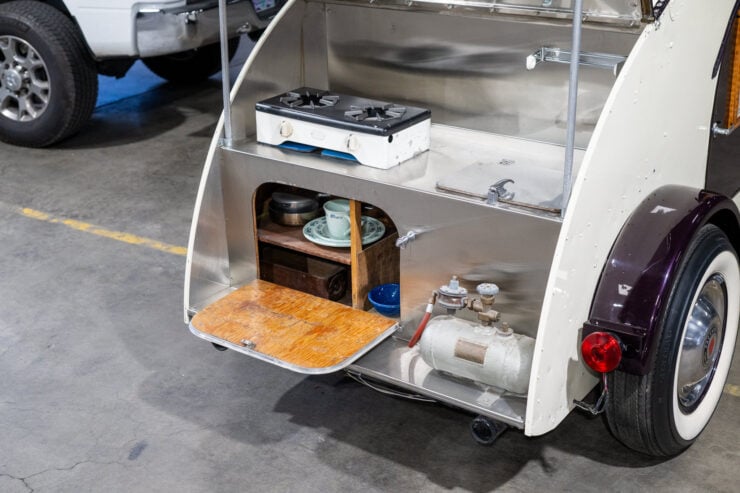
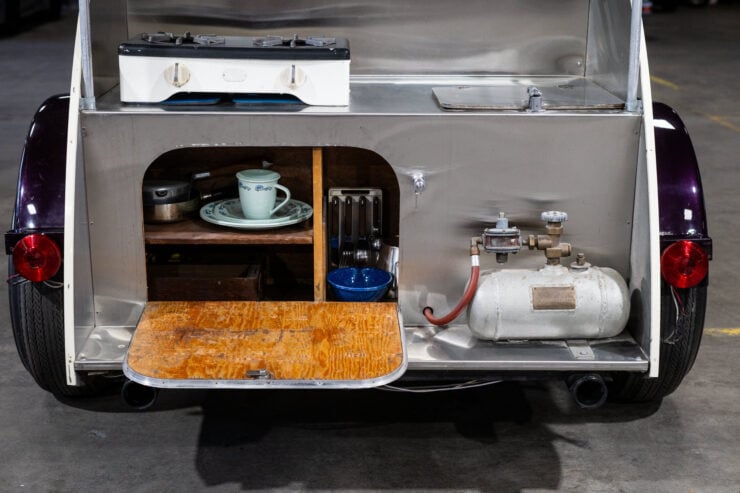
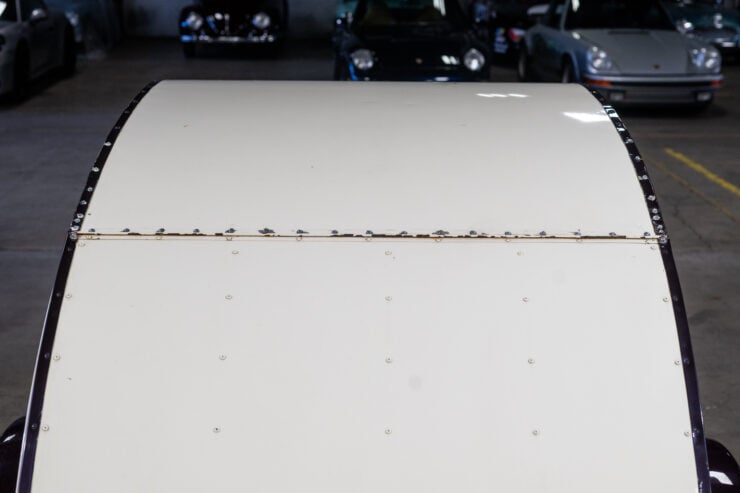
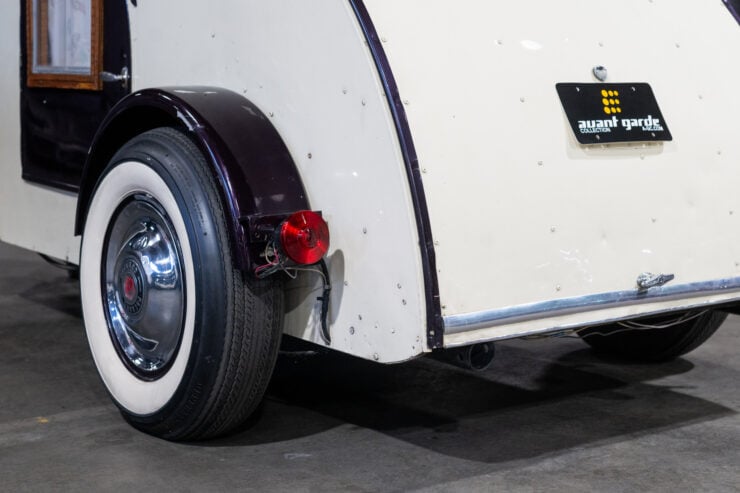

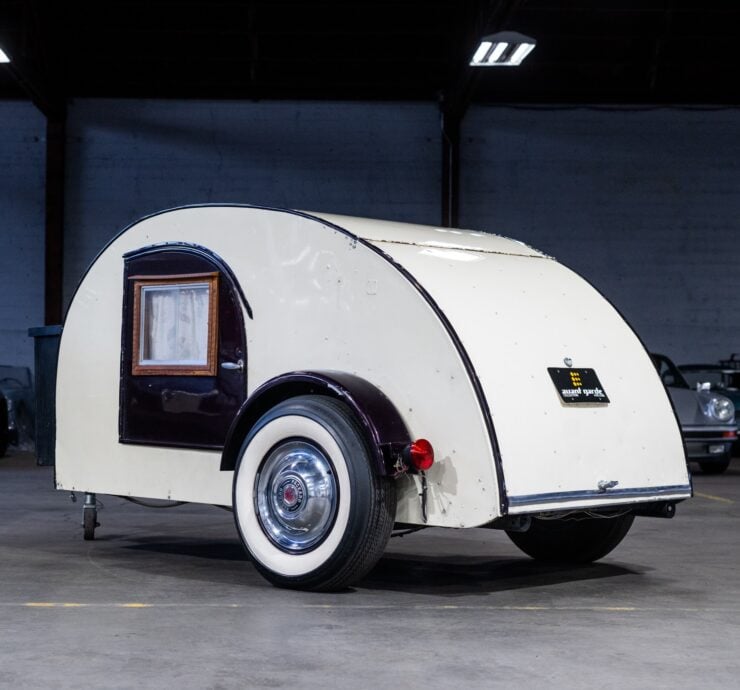
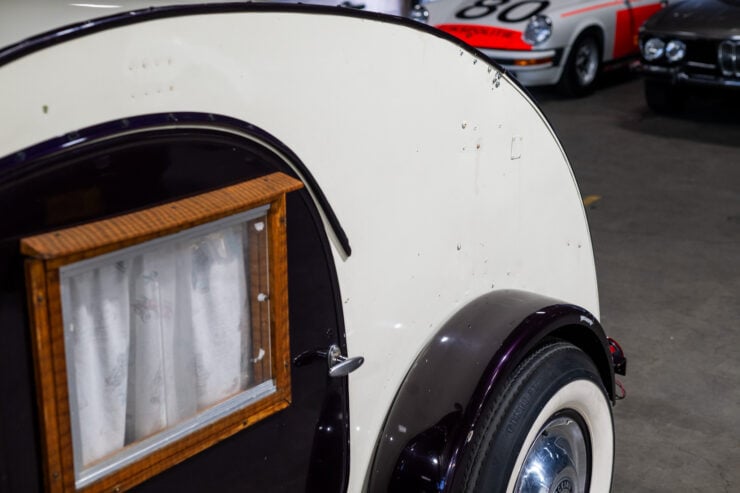
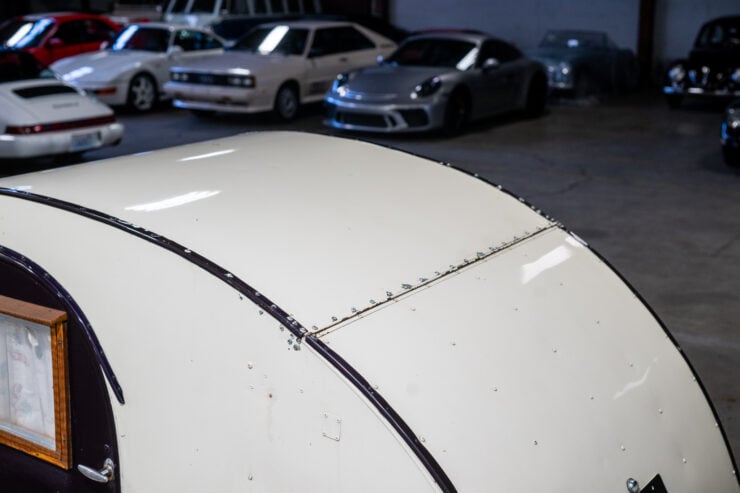
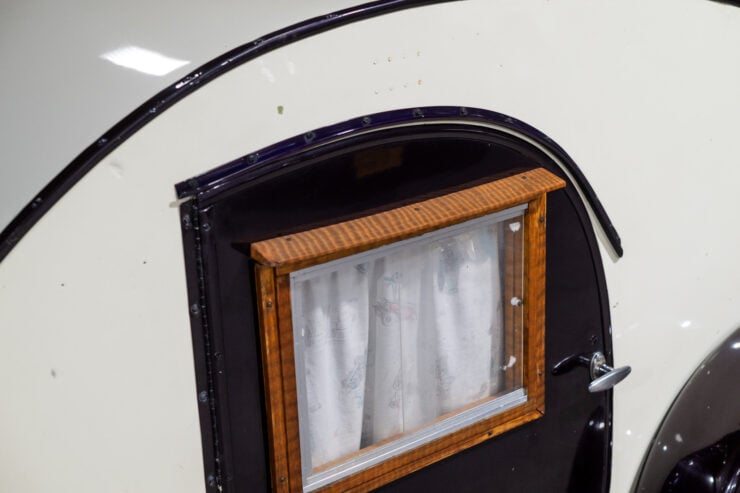
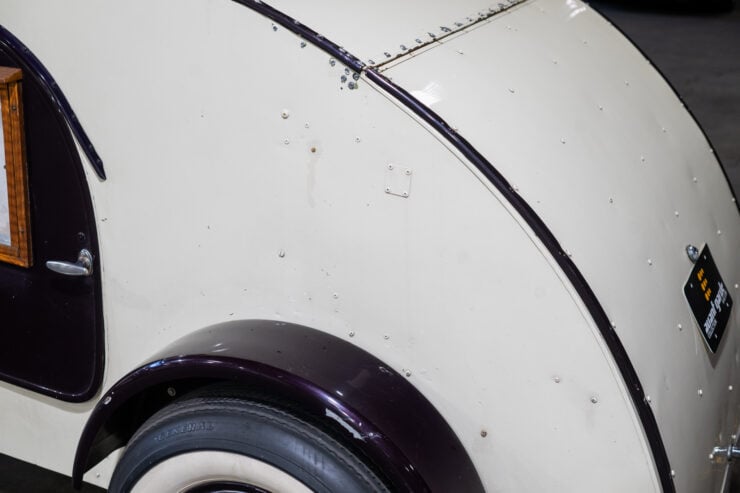
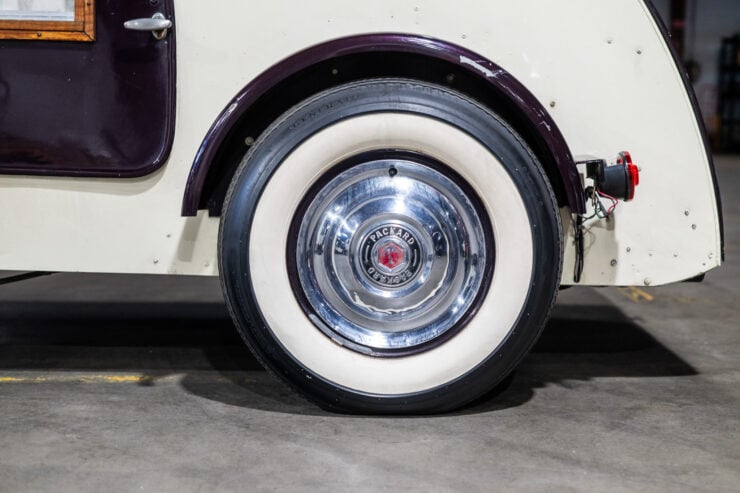
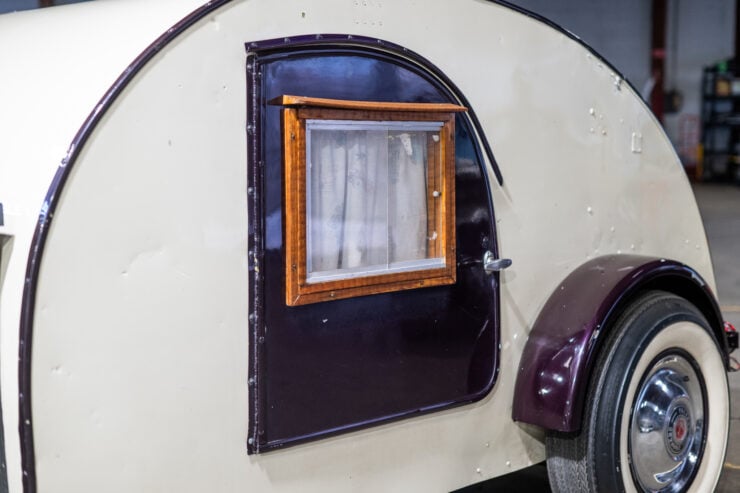
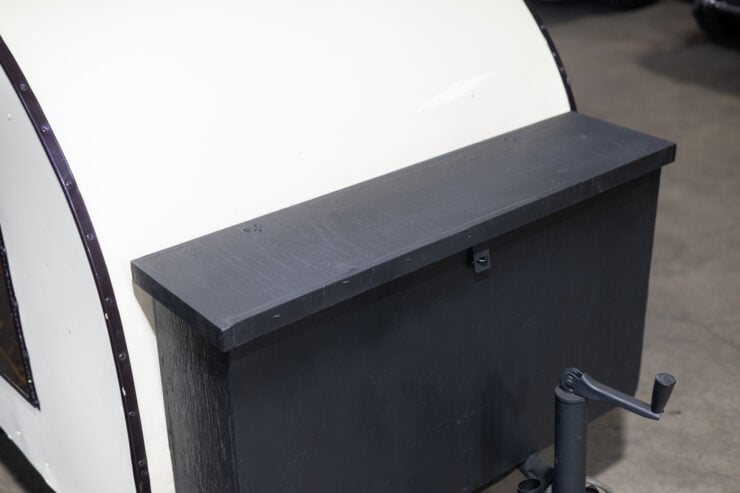
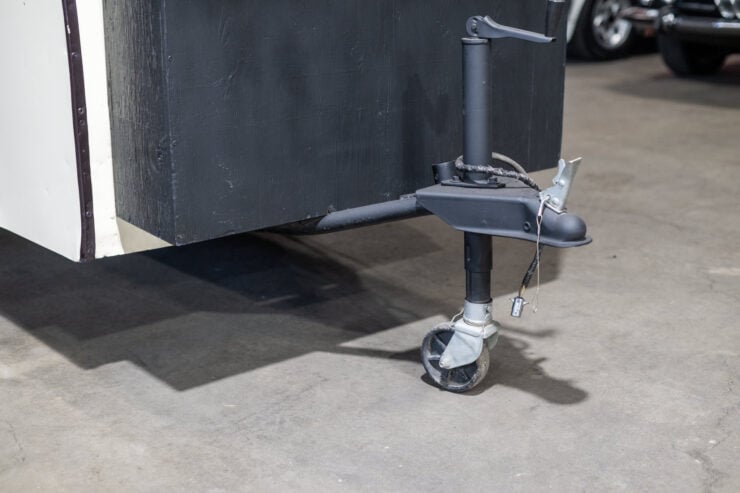
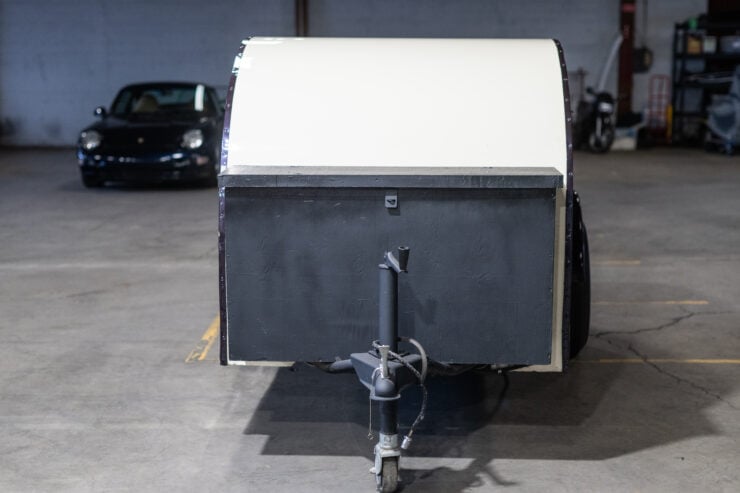
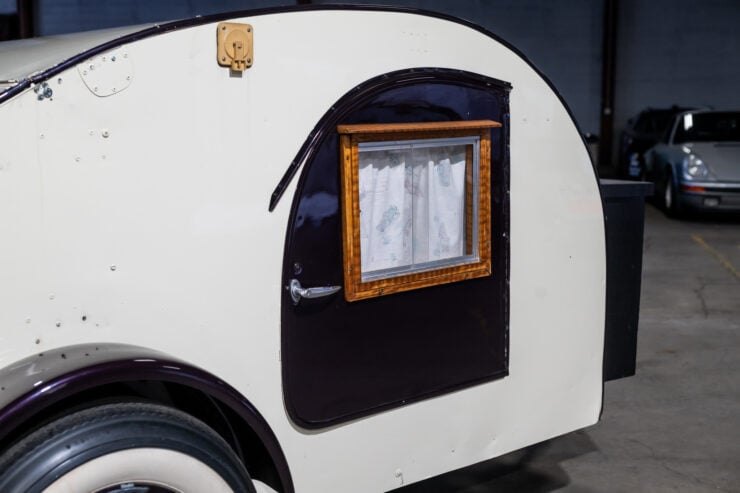
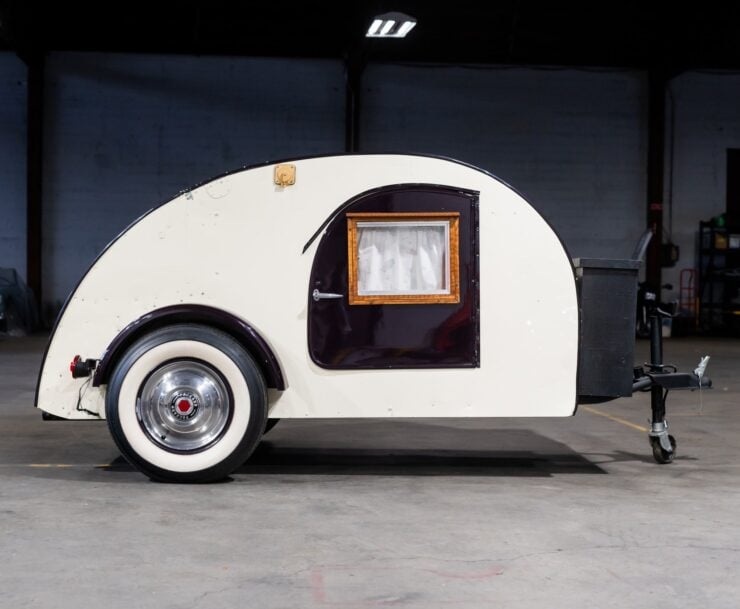
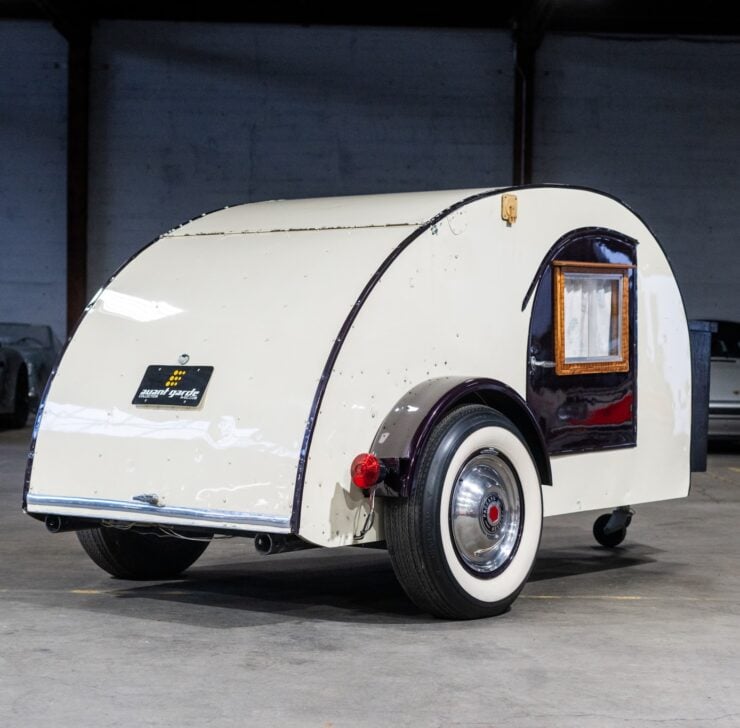
Images courtesy of Bring a Trailer

